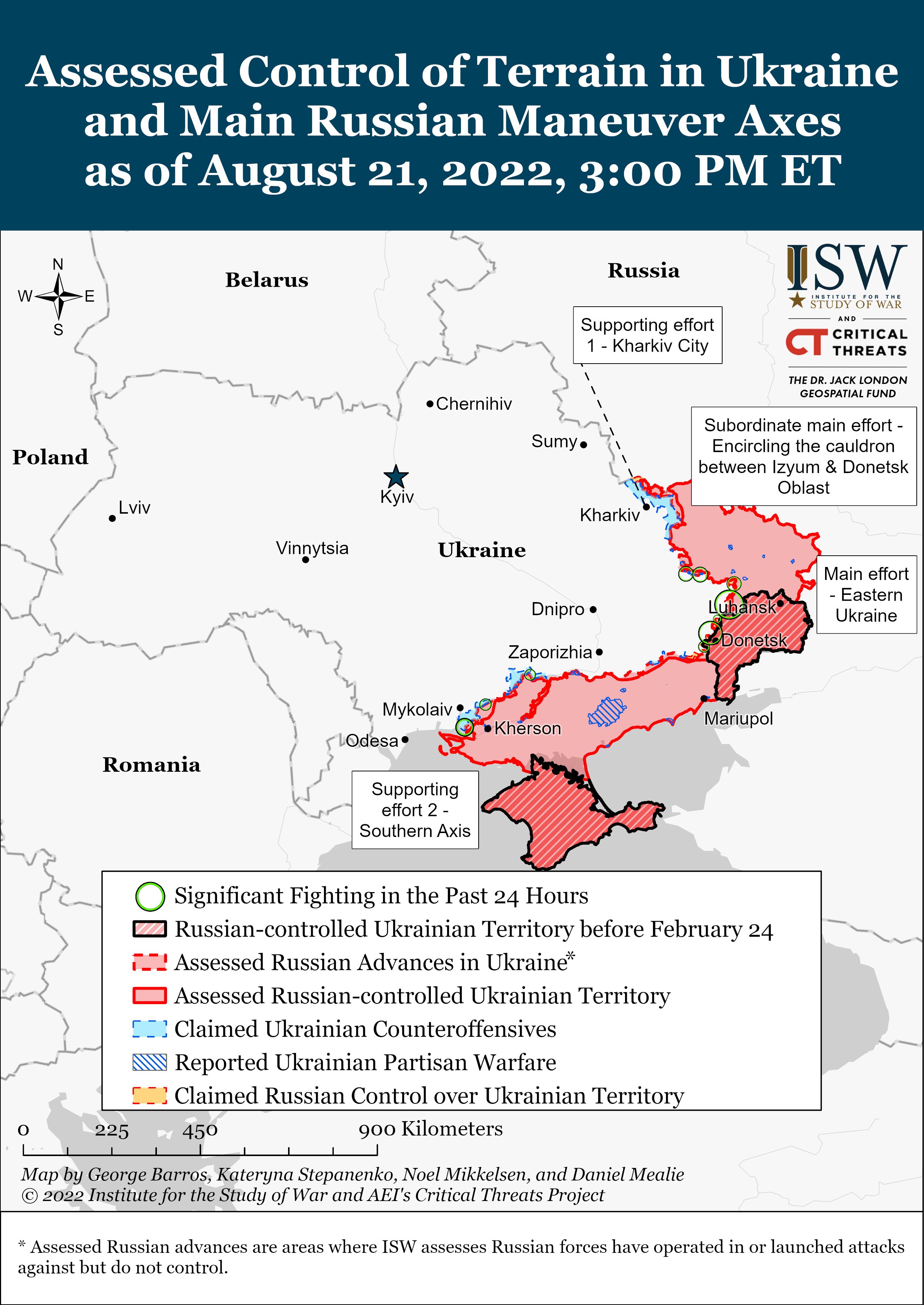
Russian forces’ momentum following territorial gains around Bakhmut and Avdiivka in late July is likely to have run out, and Russian attacks in eastern Ukraine are likely to have peaked, although Russian progress is likely to be very little – Institute for the Study of War. (ISW) said in its latest assessment.
Russian troops captured the Novoluhansk and Vuglegirsk thermal power plants southeast of Bakhmut on July 25 and 26, respectively, consolidating Russian control around the complex watershed after weeks of fighting.
Russian news sources celebrated these achievements as a significant military victory, without saying that Ukrainian military forces were able to break contact and withdraw from the area.
Russian troops also celebrated the capture of Ukrainian fortifications around the Butivka mine ventilation shaft, southwest of Avdiyivka, after Ukrainian forces withdrew from the area on July 30.
A really fundamental problem of the Russian army
Russian forces took advantage of these gains to a limited extent and attacked toward Bakhmut from the northeast and southeast, as well as around Avdiivka, but these attacks are now halting.
Russian forces did not reach significant areas around Bakhmut or Avdiivka after advancing through Novoluhanske, the power station, the Butivka mine, and several small settlements near these areas.
The failure of Russian forces to capitalize on previous gains around Bakhmut and Avdiivka is an example of a truly fundamental Russian military problem – a clearly demonstrated inability to convert tactical gains into operational successes.
Russian troops have consistently failed to take advantage of tactical victories to maneuver into the rear areas of Ukraine or to tear off significant parts of Ukrainian defense lines.
The troops will not be able to conquer much territory in the next period
Thus, they constantly give the Ukrainians time to tactically disengage and restore defensive positions, against which the Russians must then launch new attacks.
This phenomenon explains the extremely slow pace of Russian advance in the east and makes it clear that the Russians will not be able to gain much more ground in the coming months, unless the situation changes in an unpredictable way.
Russian forces will likely remain unable to commit sufficient resources to any offensive operation to regain the momentum needed to translate significant territorial advances into operational successes.
Russian forces will also need to form and deploy additional assault groups, equipment, and morale to repel even these limited territorial advances that offer small tactical advantages.
ISW Key Findings
- Russian offensive operations in eastern Ukraine have likely used up the limited momentum they had in late July and are likely to peak soon.
- The Russian military has demonstrated a persistent inability to convert small tactical gains into operational successes, a problem that will likely prevent Russia from making significant territorial advances in the coming months, barring significant changes on the battlefield.
- Ukrainian military intelligence reports that Russia and Belarus have reached an “urgent” agreement to repair damaged Russian aircraft to Belarus for re-use in Ukraine. The agreement may be part of Russia’s efforts to use a less stringent sanctions regime against Belarus to circumvent sectoral sanctions against Russia.
- Russian troops made several unsuccessful ground attacks to the southwest and southeast of Izyum.
- The invading troops made a ground offensive to the southeast of Siversk and to the northeast and south of Bakhmut.
- Russian forces achieved limited success west of the city of Donetsk, but did not conduct ground assaults on the administrative border between Donetsk and Zaporizhzhia regions. Russian forces launched unsuccessful ground attacks southwest of Donetsk and continued to attack settlements northwest and southwest of Avdiivka.
- Russian troops carried out several assaults on the Kherson-Mykolaiv front line and partially advanced to the east of the city of Mykolaiv.
- Russian forces are unlikely to be able to instill discipline in new recruits, creating a force prone to hooliganism in Russia and illegal behavior in Ukraine.
- On the eve of Ukraine’s Independence Day (August 24), the Russian occupation authorities intensified filtering measures and abduction of people in the occupied territories.
Map of the war in Ukraine as of August 21:

————–
- Monday’s events regarding the war in Ukraine are broadcast LIVE on HotNews.ro
Source: Hot News RU
James Springer is a renowned author and opinion writer, known for his bold and thought-provoking articles on a wide range of topics. He currently works as a writer at 247 news reel, where he uses his unique voice and sharp wit to offer fresh perspectives on current events. His articles are widely read and shared and has earned him a reputation as a talented and insightful writer.